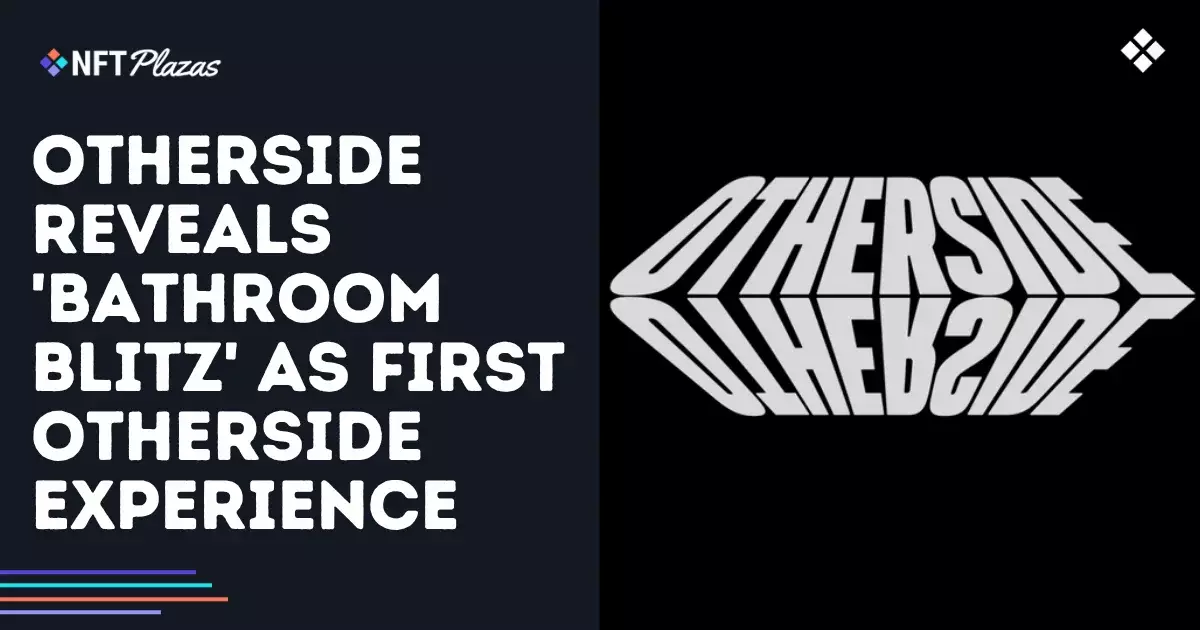Yuga Labs, the powerhouse behind BAYC and Otherside, has unveiled *Bathroom Blitz*, an 8v8 multiplayer shooter set within the miniature rendition of the infamous BAYC bathroom. The game is being touted as a pioneering effort—Otherside’s first “persistent” virtual space intended to deliver longtime engagement through dynamic gameplay and social interaction. At first glance, this sounds like a major step forward for NFT-driven metaverse projects: a live, breathing world with a progression system (Voyager XP) to incentivize active participation. However, the excitement surrounding *Bathroom Blitz* masks the deeper challenges and missteps that ought to temper expectations.
The glaring issue is that *Bathroom Blitz*—a shooter inside a bathroom—feels less like a revolutionary gaming experience and more like a novelty designed to grab headlines. While stylized BAYC references might stir existing communities, there is an inherent risk that such a narrow aesthetic focus alienates players outside the NFT “cult.” This raises the question: is Otherside innovating metaverse gameplay or merely indulging in gated creator fetishization? The product seems to lean dangerously towards the latter, risking a bubble where engagement is artificially inflated by loyalists rather than genuine gamified fun.
Persistent Worlds Require More Than Gimmicks
The notion of “persistent” and “always-on” virtual spaces is seductive because it promises a real digital dimension where players can immerse themselves indefinitely. Yet, longevity demands more than a catchy setting or a temporary social buzz. While Yuga Labs’ ambition to test infrastructure resilience and concurrency through *Bathroom Blitz* and upcoming *Otherside Outbreak* is commendable, the true litmus test will be in creating meaningful, sustainable content beyond basic shooting mechanics. Persistent worlds thrive on layered storylines, evolving economic systems, and player agency that extends beyond token holding.
The introduction of Voyager XP to track and reward engagement is a step in the right direction, but it risks devolving into another point-grinding treadmill that many live-service games fall into. Without a compelling loop that balances fun with progression, gamers—especially the savvy ones less enamored by NFT hype—will quickly lose interest. If Otherside wants to compete as a legit metaverse contender, it will have to sharpen its indie game design chops rather than rely on BAYC branding and asset monetization.
The Social Hub’s Expansion: A Token Gesture?
In parallel, Otherside has upgraded its Clubhouse—now rebranded as “Meet Me at the Clubhouse” and capable of hosting up to 500 concurrent users. This reflects an understanding that social connectivity is critical for metaverse vitality. However, simply expanding capacity is a band-aid solution if the quality of interaction remains shallow. Letting users join chat Bubbles through deeplink URLs adds convenience, but it doesn’t guarantee engaging conversations or meaningful communities.
At this stage, the social aspect still feels like a polished showroom rather than a dynamic meeting place where diverse users naturally converge. To foster genuine social capital, Otherside must cultivate spontaneous emergent behaviors, user-generated events, and perhaps more critically, open economic ecosystems that reward collaboration across different metaverse participants. The current design risks becoming a walled garden prized only by those already entrenched in the Yuga Labs sphere.
Creator Empowerment Versus Monetization Dependency
One highlight in Otherside’s roadmap is the democratization of content creation. By releasing about 1,000 in-game assets and extending tools for sticker, emote, and object crafting to Otherdeed holders, Yuga Labs is attempting to empower non-developer participants. The inclusion of built-in royalty mechanisms is a clever approach to incentivize quality and ongoing engagement without top-down financing.
Yet, this strategy walks a razor’s edge. The dependence on monetization and asset sales can skew incentives towards profit over playability. When any addition is primarily judged by its resale or royalty potential, creativity risks being reduced to speculative artifice. Moreover, this model presupposes a continuously growing user base eager to invest real money, which is an overly optimistic assumption given the volatility of the NFT space.
The Road Ahead: Bold But Fragile
Yuga Labs’ initiative is undeniably ambitious—marrying NFT ecosystem ambitions with the creation of live multiplayer experiences. *Bathroom Blitz* might mark a milestone as Otherside’s first real test of persistent gameplay, but it simultaneously exposes the platform’s current limitations. Center-right liberals who value sustainable innovation see the necessity of combining free-market creativity with grounded product innovation rather than hype-driven speculation. Otherside’s persistence will depend on its ability to move beyond novelty and deliver substance.
In an ecosystem rife with overpromises, this launch serves as a reality check: digital worlds built on the foundations of “community” and “NFT ownership” must still adhere to rigorous gaming principles and evolving social design. Until Otherside embraces that complexity, progress will remain incremental rather than transformative.


Leave a Reply